South Pole Area Management Plans and Maps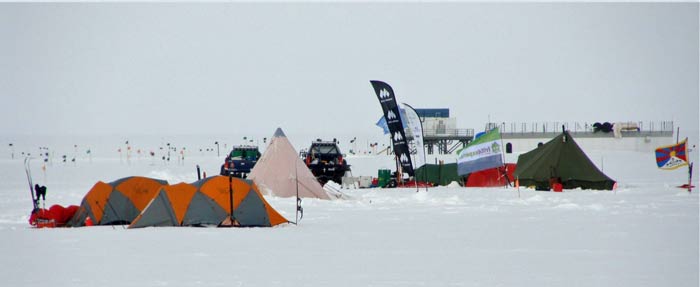 Above, one of the NGO camp sites, with AST/RO and Building 61 in the background; photo from the 2010 management report, see below Note: this page was revised 11 September 2018 based on the information presented at the 2017 Antarctic Treaty meeting. As no revisions were presented in 2018, the information should be current. Why all of these documents and maps? They were first presented by the United States at the ATCM XXVIII--the 28th Antarctic Treaty Consultative Meeting (ATCM) in Stockholm in June 2005--along with a first draft of the management plan for this Antarctic Specially Managed Area (ASMA). Quoting from the 2009-10 Pole ASMA management report [note: most of the links on this page are to MS Word or PDF documents] presented at the 2010 Antarctic Treaty meeting in Uruguay, "Pursuant to a 1982 Presidential Memorandum, the National Science Foundation (NSF) is responsible for managing the United States national program in Antarctica. The NSF policy on private expeditions to Antarctica states, "The U.S. Government is not able to offer support or other service to private expeditions, U.S. or foreign, in Antarctica." The official NSF policy on private expeditions is stated here. The management plan was revised in response to comments, and it was resubmitted at ATCM XXX in New Delhi in April/May 2007, where it was approved. The management plan itself, as well as the detailed guidelines and some of the maps have been revised several times--to reflect the changing real estate environment at Pole, to provide safer and more convenient non-governmental organization (NGO) traverse routes and camping sites, and to address the fact that a significantly larger crowd of NGO visitors had been expected for the 2011-12 season--the centennial year for Amundsen's and Scott's arrival. All of the documents linked from this page (and many more) are available on the Antarctic Treaty system (ATS) web site under the designated meeting. Alternatively, this search page allows you to search for items from one or more meetings. The search screens use javascript that do not allow them to be saved, although the referenced documents now have unique links which can be saved or bookmarked. Note that management reports and plans have not been presented each year, and that the original plan has been supplemented more than once to reflect the revised maps. Also, many of the documents and maps presented on this page are much larger in file size than what I normally present on this website. First, the documents, listed in order of issue:
Oh by the way, there is a separate Historical Site Monument (HSM) at Pole for Amundsen's tent. It's out there somewhere in the Clean Air sector, probably 75-100 feet deep. I've cussed and discussed its location and the searches for it elsewhere, but for now I'll point out that Norway proposed that the tent be listed as a Historic Site and Monument (HSM) at the 2005 Treaty meeting, and the tent is now HSM 80. Here's a description of the tent. The management plan basically outlines the NGO access restrictions in various areas...restrictions on uses of chemicals and melting of snow...access to unsafe areas...and similar procedural guidelines. The various management reports describe how things went...problems encountered...trends and statistics on NGO visitors...and changes/improvements to be made for the following season. And the visitor guidelines provide specific detail as to aircraft and surface access routes, access restrictions, communications and emergency guidelines. The latest (2017) maps:
First, Map 1--a small-scale overview, about a 175km radius around the station:
Continue on for the detailed site plan and the elevated station layout...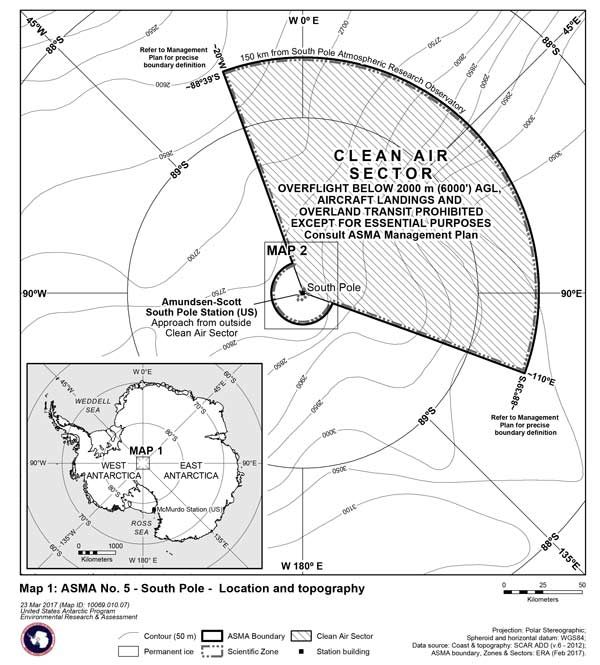 Here's the PDF (271 kb), and the original 2007 map (500 kb). Zoom in a bit to a 20km radius (Map 2): 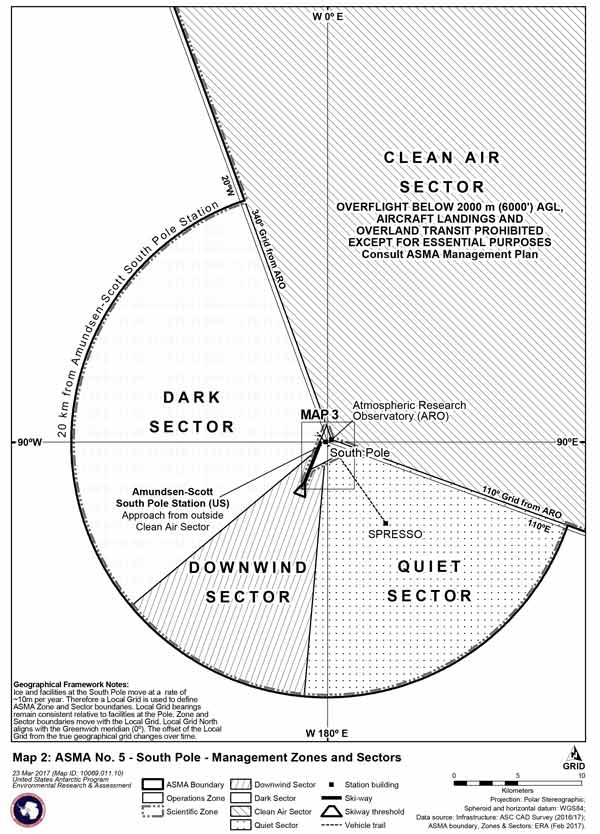 PDF (217 kb). Here is the original 2007 map (PDF 527 kb). Now move in closer to about a 5km radius (Map 3): 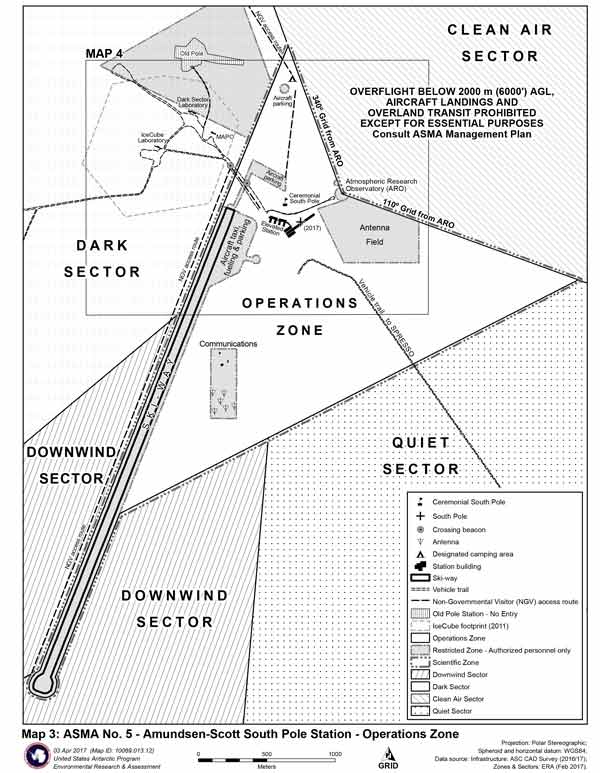 PDF (357 kb) and the original 2007 map (PDF 906 kb). A close-in site plan (Map 4):  PDF (521 kb) and the original 2007 map (PDF 680 kb). Next, another 20km radius map illustrating the non-governmental visitor approach routes (Map 5): 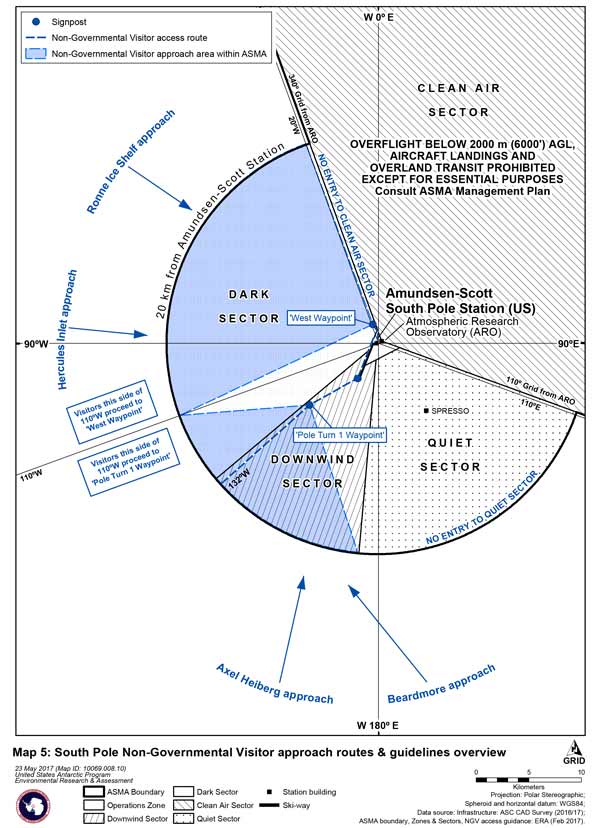 PDF (694 kb). Finally, a ~5km radius map which zooms in on the non-governmental approach routes (Map 6): 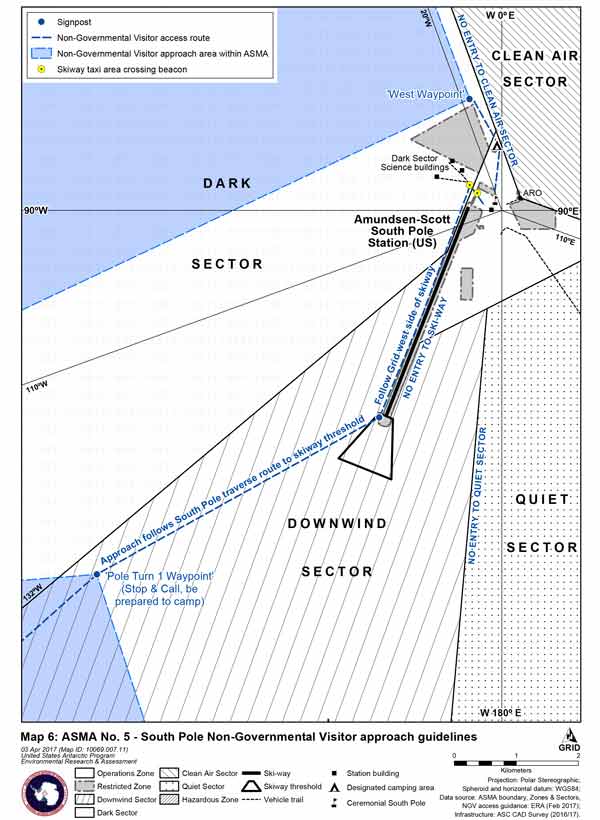 PDF (434 kb). |